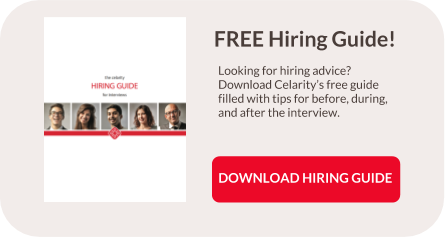So, you need to hire a UX Designer and you’re wondering what you should be looking for in a designer’s work history. So, you start skimming resumes and begin to realize that there are a lot of variations of UX designers. You start seeing phrases like, “product design” or “web design.” Sometimes you run across terms like, “Visual Designer,” “UI,” and “SEO.” How do you know what type of UX designer to hire?
In our previous post, we discussed some basic UX concepts, defined the UX purpose and process, and shared a few commonly used terms and tools. In this article, we’ll further define the role of the UX designer by discussing important differences in UX design backgrounds.
UX Product Design vs UX Web Design
Although most UX designers follow a similar process, their work experience plays an important role in their design perceptions. Some designers have spent a majority of their work history designing products while others have focused solely on web design.
To help clarify UX product design, let’s reflect on the example of the Uber phone application. When you open the app, your core problem should be quickly and easily solved (i.e. you order a ride so you can get home). When you downloaded an application, the product itself was helping you solve your problem.
Conversely, when you are considering UX web design, the user has a goal in mind but they will need guidance in discovering whether or not your site has what they need to solve their problem. The website will need to:
- Be easily found (SEO)
- Be effortlessly navigable
- Provide them the answers to their questions (sometimes leading to a goal or conversion point)
UX Site Mapping and SEO
What does user experience have to do with SEO? Some UX designers have worked closely with SEO specialists to understand how to best use quality keywords within the user journey. Strategically placing these keywords throughout the site mapping process will result in a clear and relevant website and an excellent user experience. If you are building a new website or doing a website redesign, you may want to look for this type of experience in a UX Designer’s background.
User Experience (UX) vs User Interface (UI)
The intersection of UX and UI design can be very tricky because these roles are dependent upon the organization, resources/team size, and specified processes. However, it is important to note that UX and UI are two very different roles:
- UX focuses on structuring the user journey (blueprints)
- UI finds clever ways of presenting the information (creativity and voice).
This handy map can help explain where some of the terminologies might fall under each role (as described by Michelle Hagen, Sr. UX Designer):


Questions to Ask Before Hiring a UX Designer
Before you set out to hire a UX Designer, you should have a good understanding of your business needs and the type of UX designer you’ll be looking for to fulfill those needs. You can start the process by answering these three simple questions:
- Will the UX designer be building a product or a website?
- Is your business doing a website redesign?
- Does your business have a dedicated UI designer?
Top 3 Qualities to Look for in Any UX Candidate
Some UX designers have skills in product and web design and/or have been handling the role of UX and UI for a smaller organization. Other designers may have a product or even research (IA) specific background. But once you’ve found the right type of UX Designer to help you attain your goals, there are 3 additional things you should look for in your UX candidate:
- A great understanding and usage of best practices
- Expert knowledge of platform patterns and UI Kits
- Endless curiosity
Visit The Ultimate Guide to Hiring Digital Talent page for more digital job descriptions!


